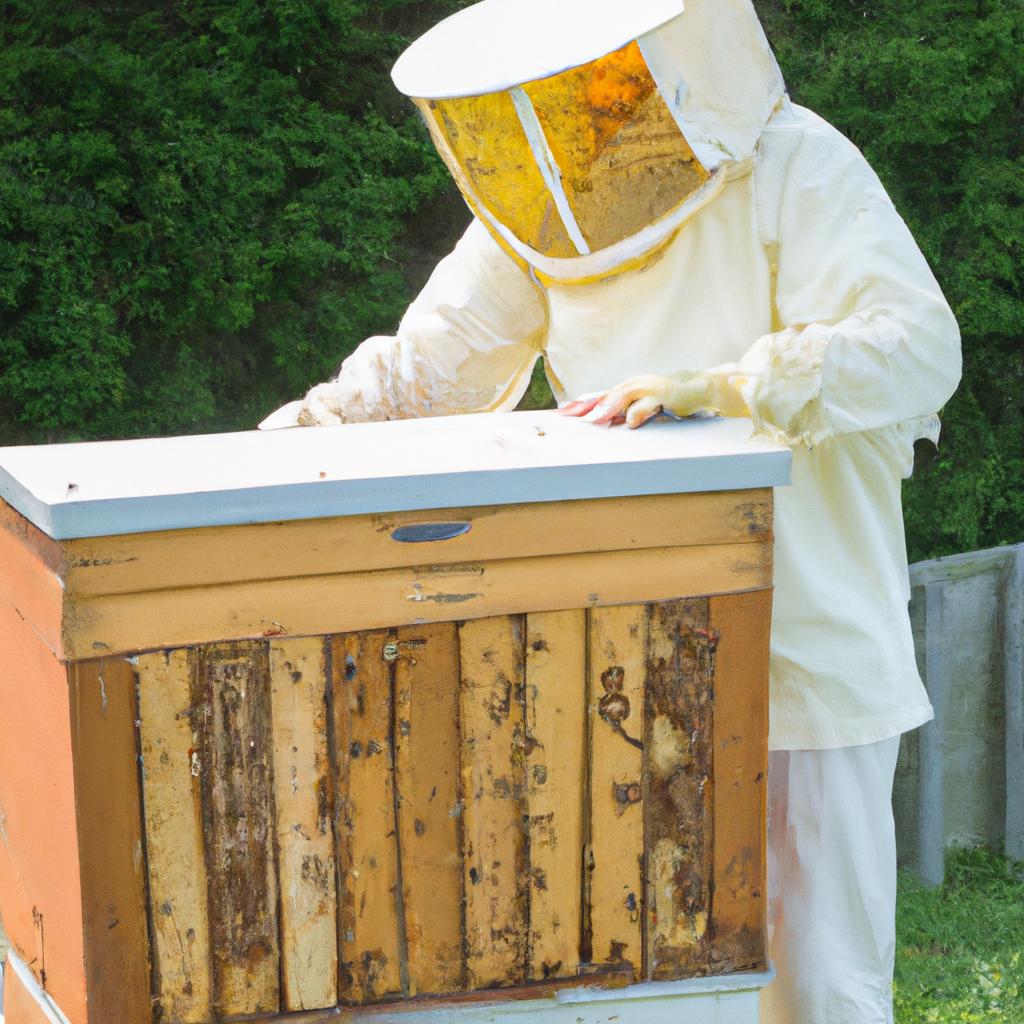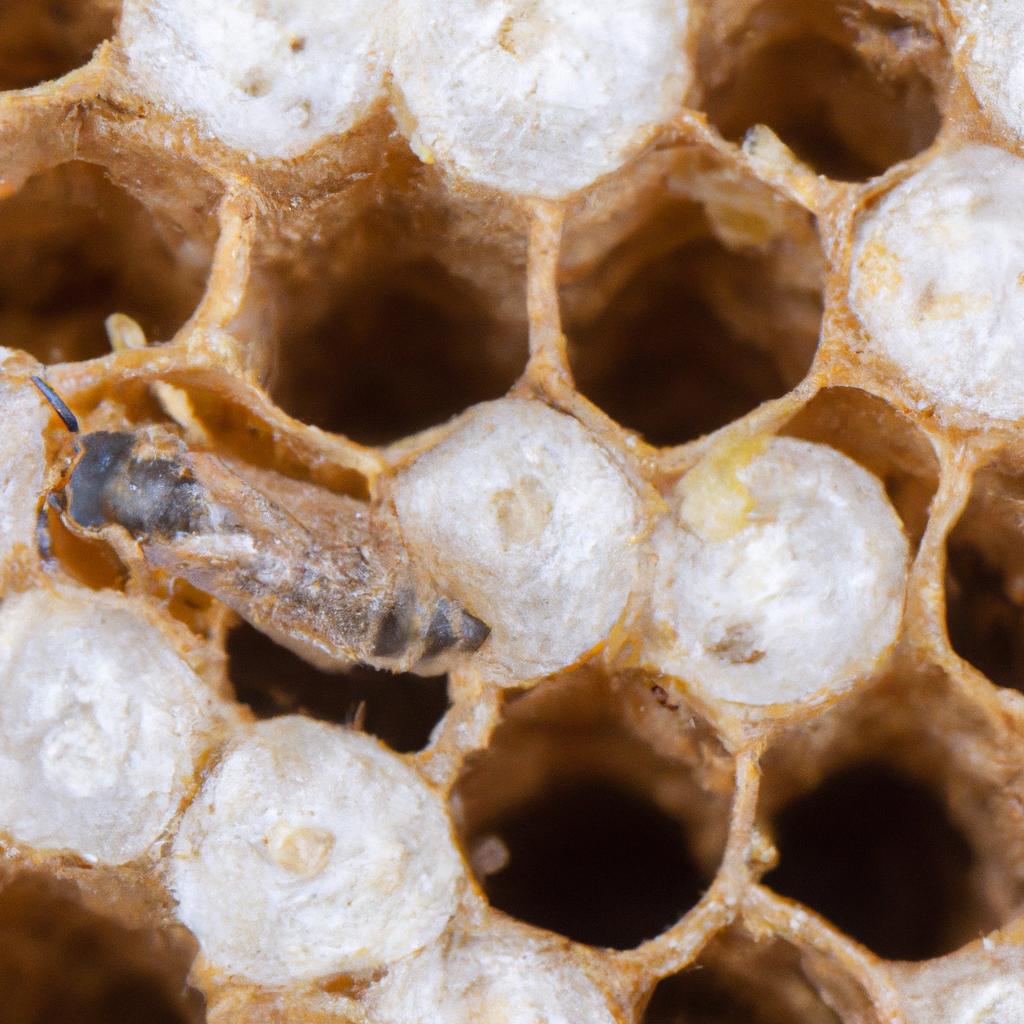Introduction

Beekeeping is a fulfilling hobby and a lucrative business. However, it comes with its fair share of challenges. One of the most significant challenges that beekeepers face is the wax moth infestation. Wax moths are destructive pests that can wreak havoc on your beehive. They can destroy honeycombs, weaken the hive’s structural integrity, and even kill the bees.
Preventing wax moths in your beehive is crucial for maintaining healthy bee colonies. In this comprehensive guide, we will explore the signs of wax moth infestation, factors that contribute to wax moth infestation, preventive measures, and treatment options.
Signs of Wax Moth Infestation

Wax moths are small, grayish-brown insects that lay their eggs in the beehive’s honeycomb. The larvae of the wax moth feed on the honeycomb, beeswax, and pollen. The following are the signs of wax moth infestation:
Physical Appearance
- Presence of web-like material on the honeycomb
- Presence of wax moth larvae on the honeycomb
- Presence of wax moth cocoons on the honeycomb or other surfaces in the beehive
Behavioral Changes of Bees
- Reduced honey production
- Reduced brood production
- Reduced bee population
- Aggressive behavior of bees towards the beekeeper
If you notice any of these signs in your beehive, it’s essential to take immediate action to prevent further damage. In the next section, we’ll explore the factors that contribute to wax moth infestation.
Factors that Contribute to Wax Moth Infestation
Wax moth infestation can occur due to various factors. Understanding these factors can help you take preventive measures to avoid wax moth infestation.
Weak Beehive Colonies
Weak bee colonies are more prone to wax moth infestation. A weak colony might not have enough bees to protect the honeycomb from wax moths. Additionally, the bees might not have enough energy to repair or maintain the honeycomb, making it susceptible to wax moth infestation.
Lack of Proper Maintenance
Lack of proper maintenance can also contribute to wax moth infestation. Beekeepers should inspect their beehives regularly to check for signs of wax moth infestation. They should also remove any unused or damaged honeycomb from the beehive to prevent wax moth infestation.
Climate Conditions
Climate conditions can also play a role in wax moth infestation. Warm and humid climates are favorable for wax moth infestation. Beekeepers in such climates should take extra precautions to prevent wax moth infestation.
In the next section, we’ll explore the preventive measures that beekeepers can take to prevent wax moth infestation.
Preventive Measures for Wax Moths
Preventing wax moth infestation is crucial for maintaining healthy beehive colonies. Here are some preventive measures that beekeepers can take to prevent wax moth infestation:
Regular Hive Inspections
Regular hive inspections are crucial for preventing wax moth infestation. Beekeepers should inspect their beehives at least once a week to check for signs of wax moth infestation. They should also remove any unused or damaged honeycomb from the beehive.
Proper Storage of Honeycombs
Proper storage of honeycombs is essential for preventing wax moth infestation. Beekeepers should store their honeycombs in a dry and cool place. They should also store them in airtight containers or plastic bags to prevent wax moth infestation.
Use of Chemical-Free Treatments
Chemical-free treatments are an effective way of preventing wax moth infestation. Beekeepers can use essential oils such as tea tree oil or lavender oil to repel wax moths. They can also use moth traps to catch adult wax moths.
Installation of Moth Traps
Moth traps are an effective way of preventing wax moth infestation. Beekeepers can install moth traps in their beehives to catch adult wax moths. They can also use pheromone traps to attract male wax moths and prevent them from mating with females.
Treatment of Wax Moth Infestation
If you notice signs of wax moth infestation in your beehive, it’s essential to take immediate action to prevent further damage. Here are some treatment options for wax moth infestation:
Removing Infested Honeycombs
Removing infested honeycombs is an effective way of preventing wax moth infestation. Beekeepers should remove any honeycombs that are infested with wax moth larvae or cocoons.
Freezing Infested Honeycombs
Freezing infested honeycombs is an effective way of killing wax moth larvae and cocoons. Beekeepers should freeze the infested honeycombs for at least 48 hours to kill the wax moth larvae and cocoons.
Use of Chemical Treatments
Chemical treatments are also an effective way of treating wax moth infestation. Beekeepers can use chemicals such as paradichlorobenzene or mothballs to kill wax moth larvae and cocoons. However, beekeepers should use these chemicals with caution and follow the instructions carefully.
In conclusion, preventing wax moth infestation in a beehive is crucial for maintaining healthy bee colonies. Beekeepers can take preventive measures such as regular hive inspections, proper storage of honeycombs, use of chemical-free treatments, and installation of moth traps. If wax moth infestation occurs, beekeepers can treat it by removing infested honeycombs, freezing infested honeycombs, or using chemical treatments. By taking these preventive measures and treatment options, beekeepers can prevent wax moth infestation and maintain healthy bee colonies.
Preventive Measures for Wax Moths
Prevention is key when it comes to wax moth infestation. The following are some preventive measures that beekeepers can take to prevent wax moth infestation:
Regular Hive Inspections
Regular hive inspections are crucial for preventing wax moth infestation. Beekeepers should inspect their beehives every two weeks during the summer months and once a month during the winter months. During the inspection, they should look for signs of wax moth infestation, remove any unused or damaged honeycomb, and repair any structural damage to the beehive.
Proper Storage of Honeycombs
Proper storage of honeycombs is another preventive measure for wax moth infestation. Beekeepers should store their honeycombs in a cool and dry place to prevent wax moth infestation. They can also freeze the honeycombs for 24 hours before storing them to kill any wax moth eggs or larvae that might be present.
Use of Chemical-Free Treatments
Chemical-free treatments are safer for bees and the environment. Beekeepers can use essential oils such as thyme, tea tree, or peppermint oil to repel wax moths. They can also use diatomaceous earth, a natural insecticide that kills wax moth larvae.
Installation of Moth Traps
Moth traps are an effective way of controlling wax moth infestation. Beekeepers can install pheromone traps in their beehives to attract and trap the male wax moths, preventing them from mating with the female wax moths.
Treatment of Wax Moth Infestation
If your beehive is already infested with wax moths, the following are some treatment options:
Removing Infested Honeycombs
Removing the infested honeycombs is the first step in treating wax moth infestation. Beekeepers should remove the infested honeycombs and replace them with new honeycombs.
Freezing Infested Honeycombs
Beekeepers can also freeze the infested honeycombs for 24 hours to kill any wax moth eggs or larvae.
Use of Chemical Treatments
If the infestation is severe, beekeepers can use chemical treatments to control wax moth infestation. However, they should use chemical treatments as a last resort and follow the instructions carefully to avoid harming the bees or the environment.
Conclusion
Wax moth infestation can be devastating to your beehive, but it’s preventable. Regular hive inspections, proper storage of honeycombs, use of chemical-free treatments, and installation of moth traps are some preventive measures that beekeepers can take to prevent wax moth infestation. If your beehive is already infested, removing infested honeycombs, freezing infested honeycombs, and use of chemical treatments are some treatment options. Remember, prevention is key. By taking preventive measures, beekeepers can maintain healthy bee colonies and protect their investment. At BeeKeepinglove.com, we strive to provide you with the best beekeeping tips and resources to help you succeed as a beekeeper.
